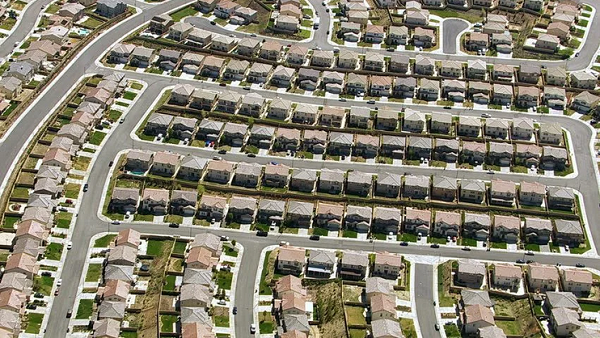Efforts to double housing plan in Caledon, Ont., raise concerns over the pace of development
A town northwest of Toronto is proposing to more than double its housing stock over the next two decades, far exceeding its provincial growth target and fuelling concerns from some residents about the rapid pace of development.
Caledon Mayor Annette Groves says she is determined to use her strong mayor powers to push ahead with controversial plans to rezone large tracts of mostly farmland for 35,000 homes, arguing the proposal would allow the town to take charge of its growth while meeting future housing demand.
“This is just to streamline the process. But it doesn’t mean that developers are going to build tomorrow. It’s going to take years,” she said in a recent interview. “My approach is: It’s better to plan it, it’s better to be in control of development and not having development controlling us.”
Under the unprecedented proposal, Ms. Groves intends to fast-track rezoning changes to allow a range of future uses for 12 pieces of land totalling about 2,000 hectares. She delayed a vote on the plan after angry residents packed an April public meeting that lasted seven hours, wrapping up after 1 a.m., but said she is committed to the changes.
“If I didn’t feel strongly that it’s the right thing to do, I never would have brought this forward,” she said.
Ontario Premier Doug Ford’s government gave mayors of some municipalities, including Caledon, stronger powers to pass bylaws related to the province’s goal of building more housing with support from just one-third of their local councils, rather than a majority. Critics call the measures anti-democratic.
Ms. Groves’s proposal to rezone land for 35,000 homes is almost triple Caledon’s provincial housing pledge of 13,000 new units by 2031. However, she says growth forecasts indicate Caledon needs 67,000 new homes for 220,000 additional people by 2051. (The town had a population of about 76,000 and just fewer than 25,000 private dwellings in 2021, according to Statistics Canada.)
Critics say the mayor is not acting in the public interest and is overstepping her strong mayor powers.
“I can see the authority to bring 13,000 homes onto the table and to make preparations for that, but where’s the authority to now triple that to 35,000 homes?” said Debbe Crandall, a local resident who co-owns a vegetable farm and is a spokeswoman for Democracy Caledon, a citizen’s group. “All of this is, like, holy mac. This is very, very concerning.”
Ms. Crandall noted that Ms. Groves’s proposed zoning bylaw amendments were written by lawyer Quinto Annibale, who has represented a group of landowners with property in one of the affected areas.
In an e-mail, Mr. Annibale said he has “no conflict of interest with respect to any retainer for any” of his clients, “including the Town of Caledon.” Ms. Groves said she is satisfied that Mr. Annibale does not have a conflict.
After facing opposition at the April 25 public meeting, Ms. Groves backed off on her plan to bring the rezoning proposals for a vote at the April 30 council meeting, saying residents deserved more details. Officials arranged four public information sessions, the last of which was scheduled for Monday.
In addition to local opposition, the provincial and regional governments have also raised concerns about the mayor’s rezoning plans.
In an April 26 letter, Minister of Municipal Affairs and Housing Paul Calandra said allowing development in six of the 12 areas “would be inconsistent and not conform with provincial and regional policy directions” because they are within the protected future route of Highway 413. Mr. Calandra asked Ms. Groves to modify the plans.
The Region of Peel said the proposals are “premature” and not supported by comprehensive planning, including a secondary plan, technical studies and infrastructure capacity, according to a series of April 19 letters from chief planner Tara Buonpensiero obtained by The Pointer. She also raised concerns about high infrastructure costs, saying more work was needed to “ensure fiscal responsibility” for the town and region.
Victor Doyle, a former senior Ontario government planner, said Ms. Groves’s proposals are “irresponsible” because they do not follow the standard planning process. He noted that the rezoning changes allow for dozens of permitted uses on the land, ranging from detached homes, townhouses and apartment buildings to shopping centres, offices and hotels.
“By providing all this zoning upfront, it removes a huge lever of control for the municipality,” he said. “If they retain control over zoning and the issuance of it, they have another lever to negotiate and ensure that their interests, financial and otherwise, are secured prior to moving to the zoning stage.”
Town planning staff are working with provincial and regional officials to address their feedback, said Eric Lucic, Caledon’s commissioner of planning and development.
The Ontario government is stripping planning authority from several upper-tier municipalities, including Peel Region, meaning Caledon will assume primary responsibility for planning when the changes take effect July 1.
It is not clear when Ms. Groves will bring revised rezoning proposals to council, although she has said she would not do so during the summer.
Mr. Lucic said new bylaw amendments could be ready for a council meeting scheduled for late June. “I’m waiting on direction,” he said.
This article was first reported by The Globe and Mail













